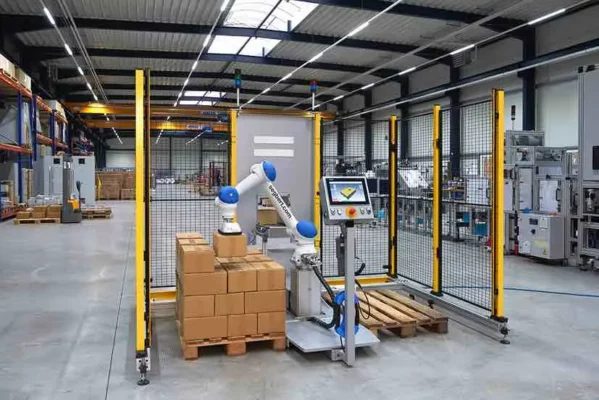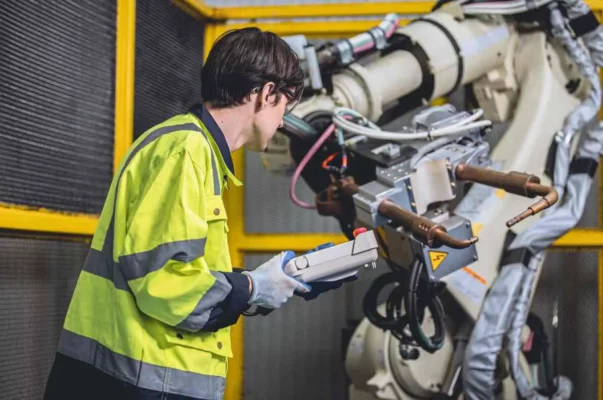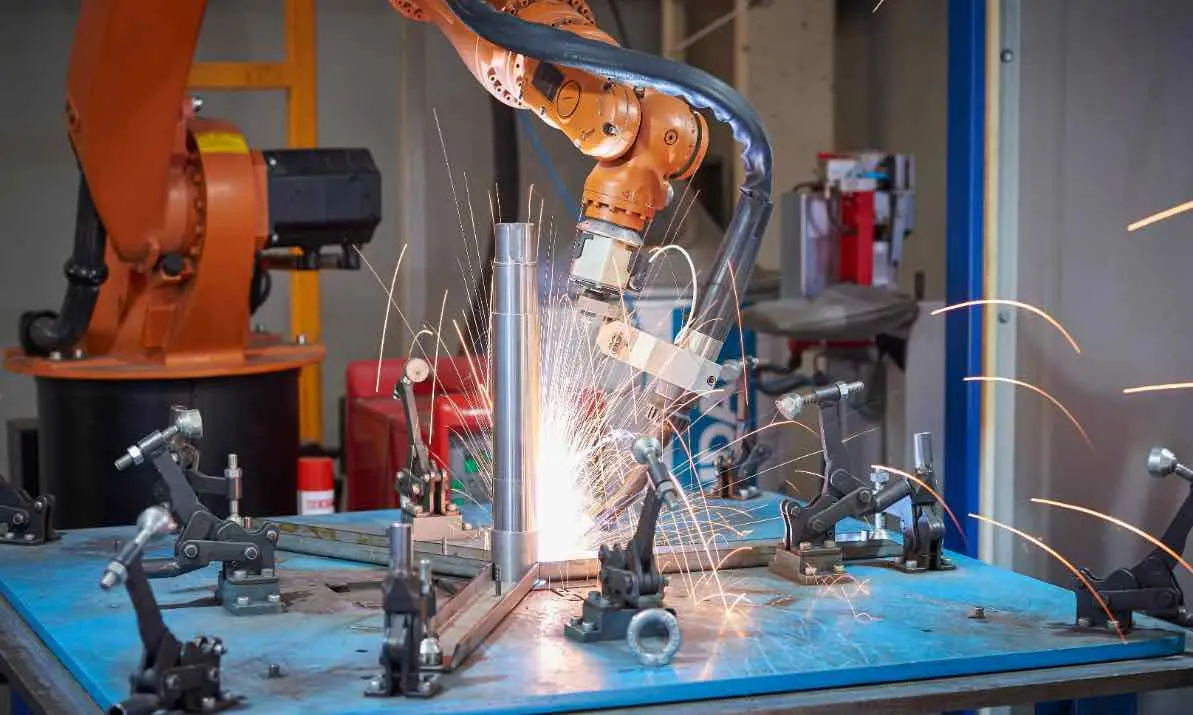Starting your cobot project can transform your manufacturing line. Whether you want to improve efficiency, increase safety, or cut costs, cobots offer a practical solution. But to succeed, you need a solid plan.
In this guide, you’ll get clear, actionable steps to help you start your cobot project right. You’ll learn how to set specific goals, choose the right cobot, and integrate it into your existing workflow. By the end, you’ll be ready to take the first steps toward making your production line more efficient and competitive. Your journey to smarter automation starts here.
1. Define Your Project Goals:
Identify the Tasks You Want to Automate:
First, pinpoint the exact tasks you want to automate. Common tasks include machine tending, packaging, palletizing, and assembly. Each task has its own set of requirements. If you’re automating machine tending, look for a cobot that handles repetitive tasks with precision. For packaging, focus on cobots known for speed and accuracy.
Set Clear Objectives:
Next, set specific and measurable goals. What do you want to achieve? Do you need to reduce cycle time? Are you aiming to increase production volume? Make your goals clear and quantifiable, like reducing production time by 20% or boosting output by 15%. These goals will guide your decisions and help you track your progress.
Explore Your Options:
Now that you know your tasks and goals, start exploring cobot options. The right cobot will meet your specific needs and help you reach your objectives. Explore a wide range of cobots on Qviro.com to find the perfect match for your automation project.
2. Evaluate Your Current Workflow:
Assess Your Existing Processes:
Before adding a cobot, take a close look at your current workflow. Break down each step of your production line and spot any delays or inefficiencies. These bottlenecks are where a cobot can help the most. For example, if a specific task is slowing down your production, a cobot might speed it up. Understanding these problem areas will help you focus on where automation can bring the most value.
Determine Compatibility with Cobots:
After reviewing your workflow, decide if it’s suitable for cobot integration. Not every process is fit for automation. Think about whether the tasks you identified can be handled by a cobot. Are these tasks repetitive and precise enough for a cobot to handle? Also, consider how the cobot will work with your current equipment and team. Making sure everything fits together is crucial for a smooth integration.
Get Expert Help:
If you’re unsure about how to evaluate your workflow or determine compatibility, you don’t have to do it alone. Consult with Alina, the AI Automation Assistant for personalized advice. Alina can guide you to make the right choices and get your cobot project started on the right path.
3. Choose the Right Cobot for Your Needs:
Consider Payload & Reach Requirements:
Start by looking at your payload and reach needs. If you need to handle heavy items, pick a cobot with the right payload capacity. If your tasks require reaching across a wide area, choose a cobot with the necessary reach. Matching these specifications to your specific tasks ensures that your cobot will perform efficiently and meet your expectations.
Evaluate Ease of Programming:
Ease of programming is crucial. Look for a cobot with a user-friendly interface that makes it simple to set up and operate. Some cobots offer pre-programmed functions that can help you get started faster. Choosing a cobot that’s easy to program will save you time and make it easier for your team to get up to speed.
Check for Industry Certifications:
Safety is essential. Make sure the cobot you choose has the necessary industry certifications. These certifications guarantee that the cobot meets safety standards and complies with industry regulations. A certified cobot helps you avoid safety issues and ensures that your operation remains compliant.

4. Select the Appropriate End-Effectors & Accessories:
Match Grippers to Your Parts:
First, choose a gripper that matches the parts you handle. Different grippers work best with specific materials and shapes. For example, if you’re dealing with flat, smooth surfaces like boxes or glass, a vacuum gripper is a good fit. For metal parts, a magnetic gripper might be better. If you need to handle delicate items like electronics or food, a soft gripper will help you avoid damage. By picking the right gripper, you ensure your cobot performs reliably and efficiently.
Consider Additional Tools:
Next, think about other tools that can boost your cobot’s capabilities. A vision system can help your cobot recognize and adapt to different parts or orientations. Force sensors ensure your cobot applies just the right amount of pressure, which is important for tasks that require a gentle touch. You might also consider tool changers that let your cobot switch between different end-effectors quickly, making your operation more flexible. These tools can help you get the most out of your cobot.
5. Plan for Integration with Your Existing Systems:
Connectivity & Communication:
To integrate your cobot successfully, make sure it can connect with your existing machines and software. Start by confirming that your cobot is compatible with your current systems. Check that the cobot’s control system can easily link to your network. Ensure the communication protocols and software interfaces match. This will help your cobot operate smoothly within your production line without causing problems.
Space & Layout Considerations:
Plan how your cobot will fit into your workspace. Look at the available space and consider how the cobot’s reach will interact with other equipment. Make sure there’s enough room for the cobot to work safely without disrupting other tasks. Proper planning helps you avoid unexpected changes and keeps your workflow running efficiently.
Safety Protocols:
Safety is critical when adding a cobot to your operation. You need to set up safety measures that meet both cobot and workplace standards. This includes installing safety sensors, barriers, and emergency stop functions. Make sure your cobot’s safety features align with your existing safety protocols to maintain a secure working environment.
Connect with System Integrators:
For personalized help with integrating your cobot, connect with system integrators on Qviro.com/match. They can guide you through the process and ensure a smooth integration with your current systems.

6. Create a Pilot Test:
Run a Small-Scale Test:
Start by running a small-scale pilot test before fully deploying your cobot. This helps you identify and fix any issues in a controlled setting. By testing on a smaller scale, you can catch problems early and make adjustments without disrupting your entire operation. This step ensures that your cobot performs as expected and integrates smoothly with your current systems.
Analyze Performance:
During the pilot test, carefully monitor your cobot’s performance. Focus on important metrics like uptime, efficiency, and return on investment (ROI). Evaluate how well the cobot handles its assigned tasks and its impact on your overall production. Identify any areas where the cobot may not be meeting your expectations. This analysis gives you a clear understanding of how effective the cobot is in achieving your goals.
Adjust & Optimize:
After completing the pilot test, use the insights you’ve gained to make necessary adjustments. If you encounter any issues, refine your setup to resolve them. This could involve modifying the cobot’s programming, changing its placement in your workspace, or improving how it interacts with other equipment. Making these adjustments ensures your cobot is fully optimized for your specific needs before you move to full deployment.
7. Train Your Team:
Skill Development:
For your cobot project to succeed, you need to train your team to work effectively with the new technology. Start by focusing on programming and troubleshooting skills. Your team should know how to program the cobot for various tasks and make adjustments as needed. They also need to be prepared to troubleshoot any issues that come up during operation. Proper training boosts your team’s confidence and reduces downtime, ensuring your cobot runs smoothly and efficiently.
Change Management:
Introducing cobots into your workflow is a big change for your team. To make the transition easier, start by clearly explaining how cobots will help your team. Focus on the benefits like improved safety and increased efficiency. Get your team involved early, and make sure you listen to their concerns. Offer hands-on training and give everyone time to get comfortable with the new technology. By managing this change carefully, you ensure your team feels supported and ready to work with cobots.
8. Full-Scale Deployment:
Expand Your Cobot Use:
After your pilot test, it’s time to fully integrate the cobot into your production. Start by gradually increasing its tasks. Begin with basic tasks and then add more complex ones as you gain confidence in the cobot’s performance. Plan and test each step carefully to avoid any disruptions. Expanding gradually lets you fine-tune your processes and make necessary adjustments as the cobot becomes a key part of your production line.
Continuous Monitoring & Improvement:
Once your cobot is fully deployed, it’s essential to keep monitoring its performance. Regularly check metrics like uptime, efficiency, and product quality. Address any issues or signs of wear immediately. Keep the cobot updated with the latest software and perform regular maintenance to ensure it runs smoothly. By continuously monitoring and improving, you can ensure your cobot operates efficiently and consistently meets your expectations.
Full-scale deployment involves carefully expanding your cobot’s role and maintaining its performance. These steps will help you maximize the benefits of automation and keep your production line running smoothly.
Conclusion:
Your cobot project can significantly improve your production line. By following these steps—setting clear goals, evaluating your workflow, choosing the right cobot, selecting the right end-effectors, planning integration, running a pilot test, training your team, and scaling up—you are setting yourself up for success. Keep monitoring and optimizing your cobot’s performance to ensure it meets your needs. With careful planning and execution, your cobot will help you increase efficiency, safety, and productivity. Ready to take the next step? Explore your cobot options and find the right fit for your needs on Qviro.com.






